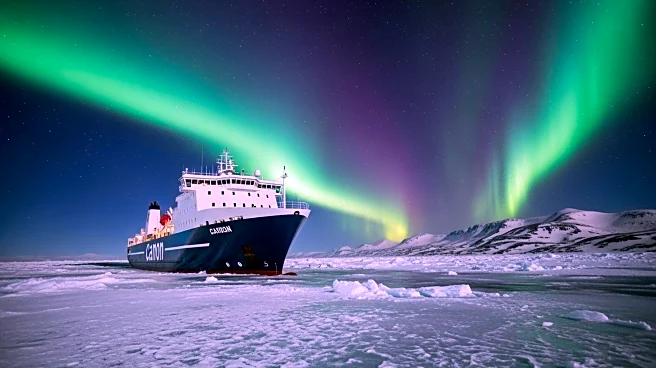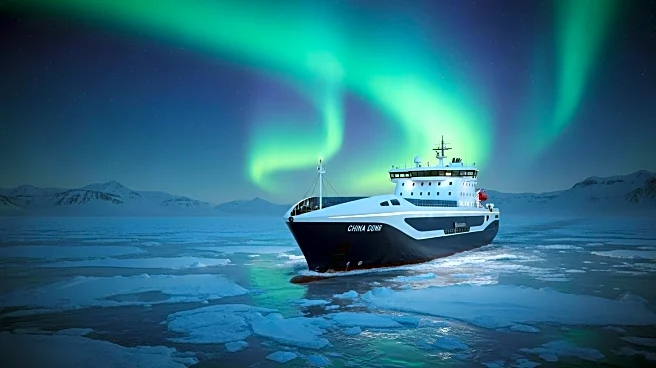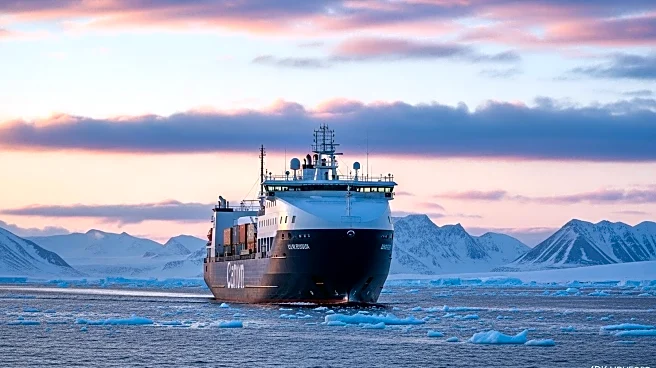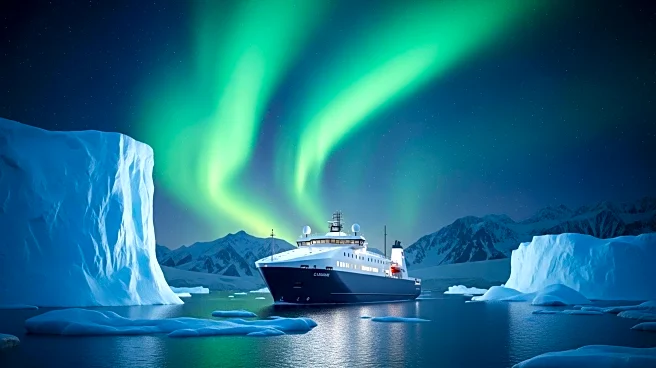What's Happening?
A Chinese-operated containership, Istanbul Bridge, completed a record-setting Arctic transit from Ningbo-Zhoushan port to the UK, arriving at Felixstowe on October 13. The vessel, registered in Liberia,
took 21 days to complete the journey, which was initially expected to take 18 days but was delayed due to bad weather off Norway. The ship carried approximately 4,000 TEU of cargo, including clothing and energy storage cabinets, valued at $197 million. This transit marks the fastest route to Europe compared to other traditional routes, such as the China-Europe Railway Express and the Suez Canal.
Why It's Important?
The successful Arctic transit by the Istanbul Bridge highlights the growing significance of the Northern Sea Route as a viable shipping path, potentially reducing transit times and diversifying trade routes between China and Europe. This development could enhance trade efficiency and strengthen economic ties between China and European countries, particularly in the delivery of high-demand goods like photovoltaics and electric vehicles. The route's viability may also influence global shipping strategies, especially as environmental changes make Arctic routes more accessible.
What's Next?
Following its UK stop, the Istanbul Bridge is scheduled to proceed to Hamburg, Germany, and then to Gdansk, Poland. The ship's journey underscores China's commitment to expanding Arctic shipping routes, aligning with Russia's goals for increased Arctic transit. As environmentalists raise concerns about the ecological impact of Arctic shipping, stakeholders may need to address these issues while balancing economic benefits.
Beyond the Headlines
The use of Arctic routes for shipping raises ethical and environmental concerns, particularly regarding the impact on fragile ecosystems. As ice continues to melt, the geopolitical dynamics of Arctic shipping may shift, with countries like Russia and China potentially gaining strategic advantages in global trade.












